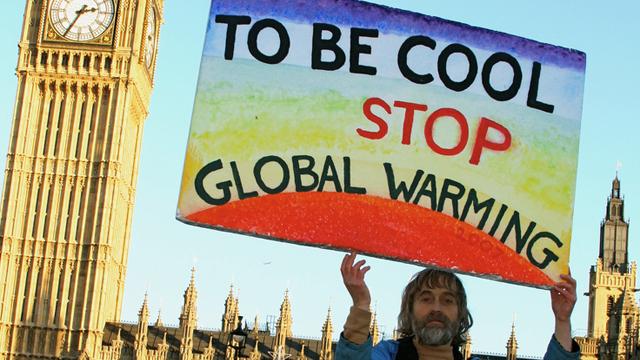
An agreement by almost 200 nations to curb rising greenhouse gas emissions by 2020 will be far more costly than taking action now to tackle climate change. Quick measures to cut emissions would give a far better chance of keeping global warming within an agreed U.N. limit of 2 degrees Celsius (3.6F) above pre-industrial times to avert more floods, heatwaves, droughts and rising sea levels, a study found.
"If you delay action by 10, 20 years you significantly reduce the chances of meeting the 2 degree target," said Keywan Riahi, one of the authors of the report at the International Institute for Applied Systems Analysis in Austria.
"It was generally known that costs increase when you delay action. It was not clear how quickly they change," he told Reuters of the findings in the science journal Nature based on 500 computer-generated scenarios.
It said the timing of cuts in greenhouse gases was more important than other uncertainties - about things like how the climate system works, future energy demand, carbon prices or new energy technologies.
The study indicated that an immediate global price of $30 a metric ton on emissions of carbon dioxide (CO2), the main greenhouse gas, would give a roughly 60 percent chance of limiting warming to below 2C.
Wait until 2020 and the carbon price would have to be around $100 a metric ton to retain that 60 percent chance, Riahi told Reuters of the study made with other experts in Switzerland, New Zealand, Australia and Germany.
And a delay of action until 2030 might put the 2C limit - which some of the more pessimistic scientists say is already unattainable - completely out of reach, whatever the carbon price.
"The window for effective action on climate change is closing quickly," wrote Steve Hatfield-Dodds of the Commonwealth Scientific and Industrial Research Organisation in Australia in a separate commentary in Nature.
Governments agreed to the 2C limit in 2010, viewing it as a threshold to avert dangerous climate change. Temperatures have already risen by 0.8 degree C (1.4F) since wide use of fossil fuels began 200 years ago.
Economic Slowdown
After the failure of a 2009 summit in Copenhagen to agree a worldwide accord, almost 200 nations have given themselves until 2015 to work out a global deal to cut greenhouse gas emissions that will enter into force in 2020.
Amid an economic slowdown, many countries at the last U.N. meeting on climate change in Qatar in December expressed reluctance to make quick shifts away from fossil fuels towards cleaner energies such as wind or solar power.
Each U.S. citizen, for instance, emits about 20 metric tons of carbon dioxide a year. There is no global price on carbon, only regional markets - in a European Union trading system, for instance, where industrial emitters must pay off they exceed their CO2 quotas, 2013 prices are about 6.7 euros ($8.83) a metric ton.
The report also showed that greener policies, such as more efficient public transport or better-insulated buildings, would raise the chances of meeting the 2C goal.
And fighting climate change would be easier with certain new technologies, such as capturing and burying carbon emissions from power plants and factories. In some scenarios, the 2C goal could not be met unless carbon capture was adopted.
3 WAYS TO SHOW YOUR SUPPORT
- Log in to post comments











